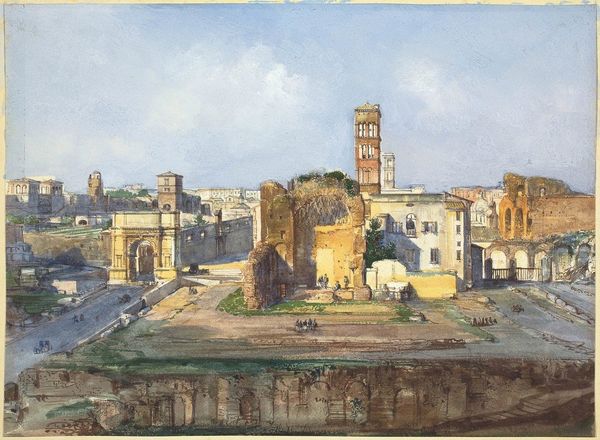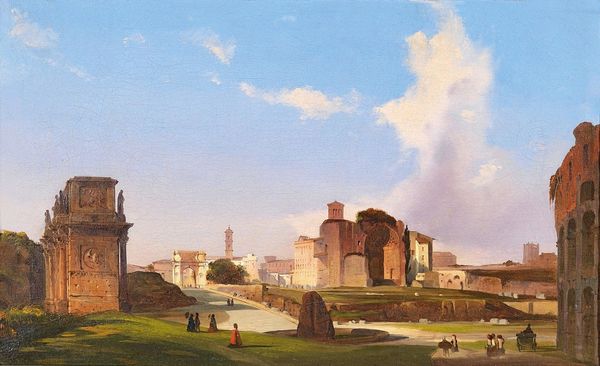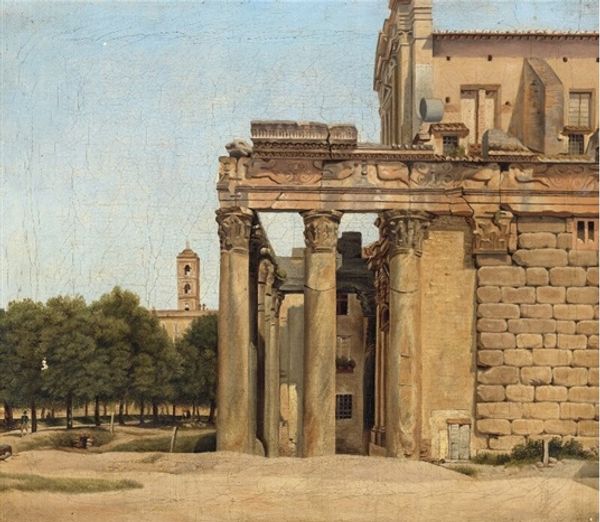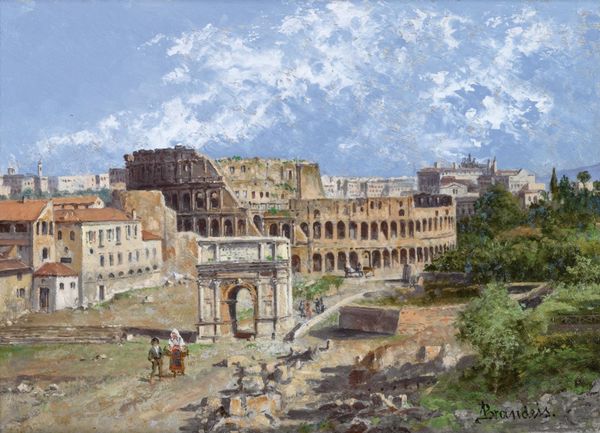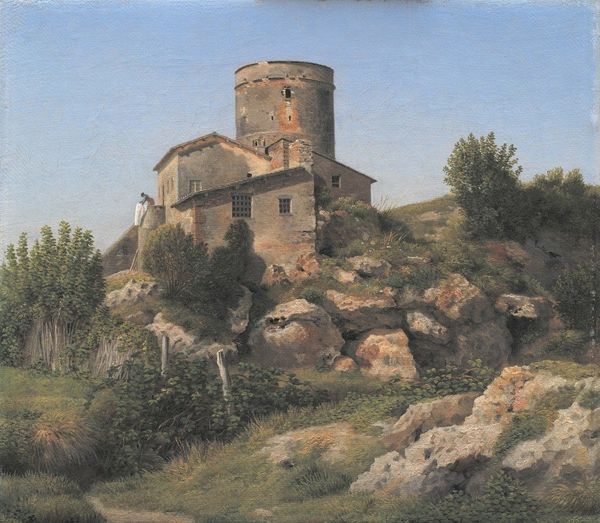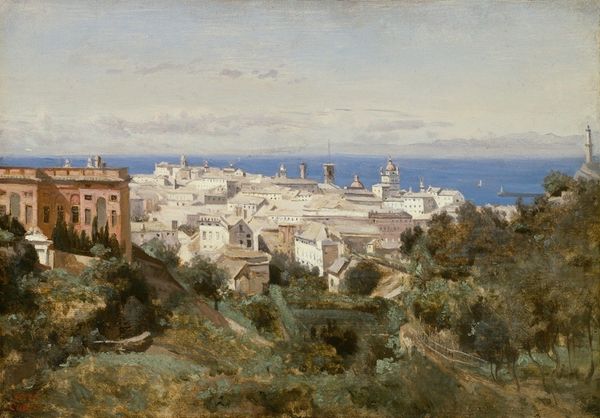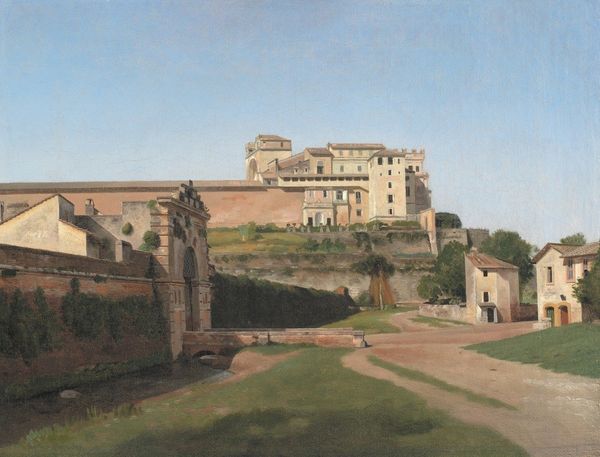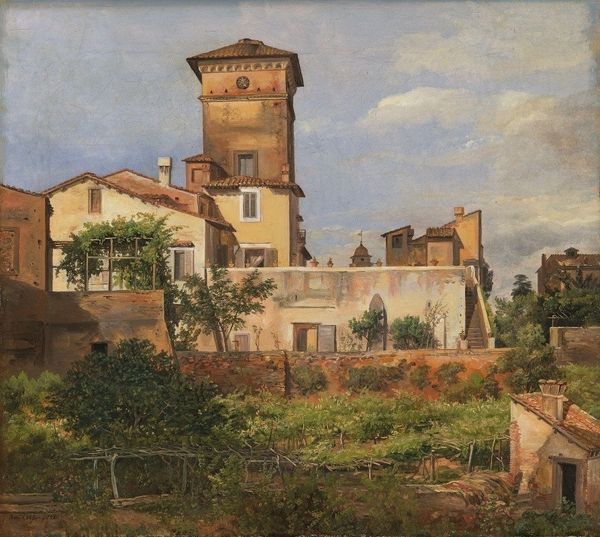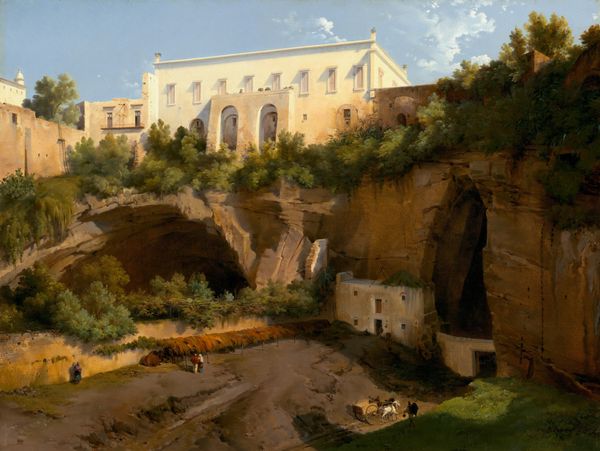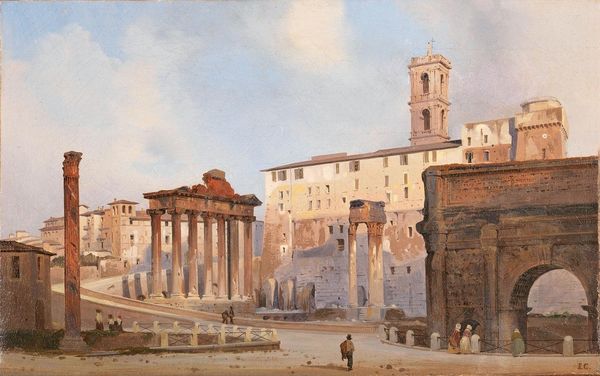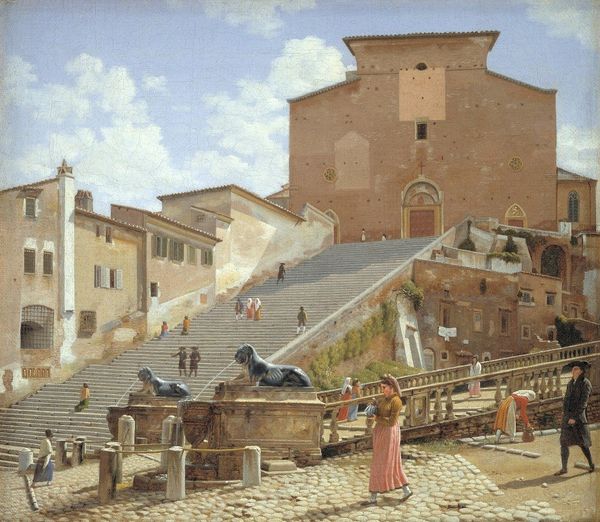
painting, plein-air
#
neoclacissism
#
urban landscape
#
painting
#
plein-air
#
landscape
#
perspective
#
cityscape
#
watercolor
Copyright: Public Domain: Artvee
Christoffer Wilhelm Eckersberg painted "View of the Cloaca Maxima, Rome" with oil on canvas, capturing Rome's ancient sewer system amidst the cityscape. The Cloaca Maxima, initially built by the Etruscans, served as a symbol of Rome's engineering prowess, efficiently draining the city and enabling its growth. Beyond utility, the sewer represents the hidden underbelly of civilization. Think of the labyrinthine passages beneath Knossos, or the symbolic significance of the underworld in mythology. Eckersberg contrasts the visible grandeur of Rome with this obscured network, hinting at the inevitable decay and the cyclical nature of civilizations. It's as if he's reminding us that even the most advanced societies have their unseen foundations and that time buries all. This sentiment echoes through art history, recurring in Romantic depictions of ruins and modern explorations of urban infrastructure.
Comments
No comments
Be the first to comment and join the conversation on the ultimate creative platform.
